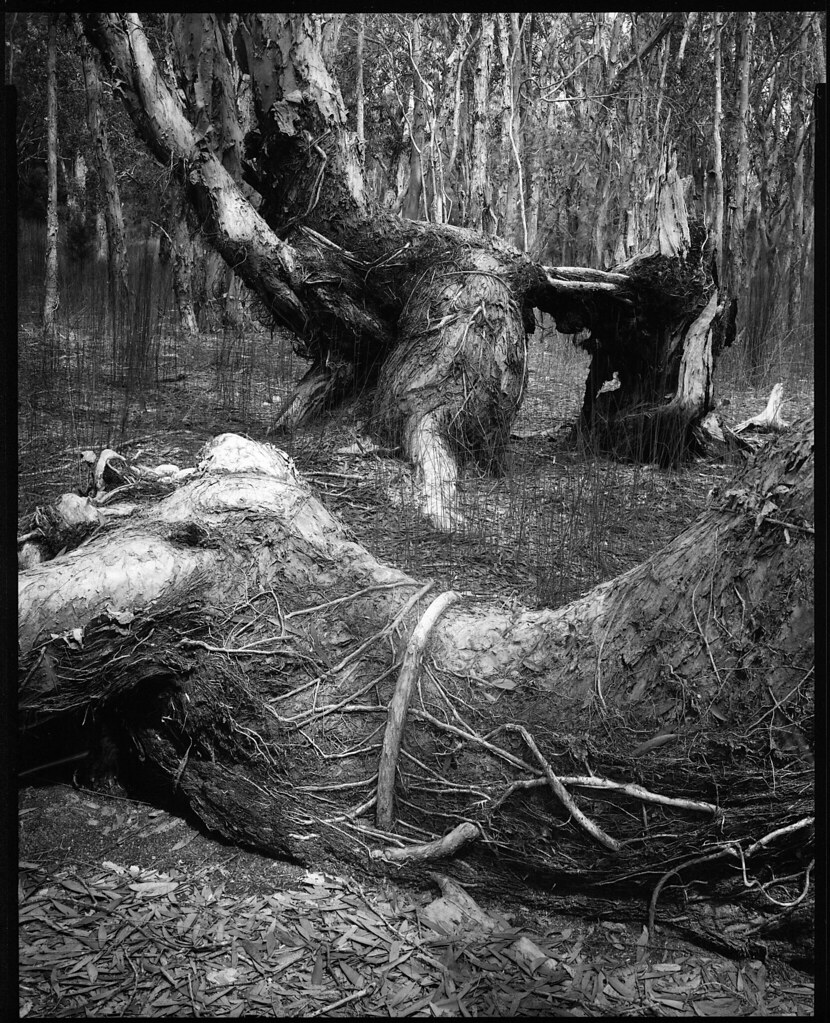Maris Rusis
Member

Swamp Forms, Noosa NP
Gelatin-silver photograph on Agfa MCC 111 VC FB photographic paper, image size 24.5cm X 19.6cm, from a 8x10 Tmax 400 negative exposed in a Tachihara 810HD triple extension field view camera fitted with a Fujinon-W 300mm f5.6 lens.
Australia is a place of extremes and even a swamp can dry completely. Trees that spend years partially submerged can develop adventitious roots that proliferate like knotted veins and arteries; very organic but also carrying a premonition of threat. These specimens of Melaleuca quinquenervia fell years ago because their huge bulk could not be supported by waterlogged soil but they did not die. Their aggresive grasp for life enables them to grow in any position. M. quinquenervia now demonstrates this same aggression as an invasive species in southern Florida where it chokes sawgrass marshes and converts open space into dark swamps.
